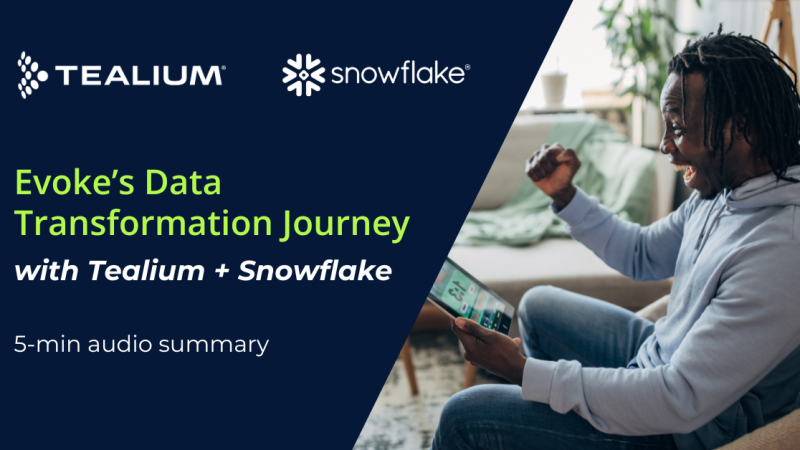Our CMO, Heidi Bullock, sat down with us to share common Customer Data Platform FAQs she hears from professionals all over the world. The FAQs run the gamut, covering the basics, like what a CDP even is, to more complex topics like the difference between a CDP and a data warehouse, or the challenges and opportunities marketers face when adopting a first party data strategy.
Customer Data Platform FAQs: What is a CDP?
A CDP is a software platform that helps organizations better understand their buyer, engage them, and ultimately help with customer retention. The best CDPs start with data collection, meaning they can collect data server-side or client-side, and bring that data together to confirm user identity to activate data. With privacy changes and browser changes, the way companies do their advertising, track users and user behavior, and attribution has changed. Conversion APIs help address these changes by managing conversion data server-side versus client-side, which leads to a better understanding of conversions and attribution. In a lot of cases, server-side data collection is more accurate because event data (for example, conversions) can be sent in a more reliable way.
Customer Data Platform FAQs: Are CDPs better suited for brands or marketing agencies?
While CDPs have typically been thought of as being a tool for brands exclusively, CDPs are often owned by brands but accessed and optimized by an agency partner. Agencies can assist with understanding use cases and best practices to guide the brands as to how to make the best use of a CDP.
There is a real opportunity for agencies to get more involved in this area and be seen as the experts of CDPs and to lead the way for brands in understanding optimizations, data patterns and running use cases.
Customer Data Platform FAQs: What is the difference between a CDP and a Data Warehouse?
Data warehouses are typically used by companies to store and house data (usually all types of corporate data) in a passive (static) way, and then groups like IT or data analysts will access data for reporting and analysis. Any type of data can sit in a data warehouse. By contrast, Customer Data Platforms are accessed by marketing and data scientists and focused on customer data, collecting and activating that data in real time. CDPs are much more focused on activating the data to drive customer experience, and typically feature large integration marketplaces. In a lot of cases, a data warehouse is used in collaboration with a Customer Data Platform.
Customer Data Platform FAQs: Can you share some of the limitations of CDPs today?
One of the biggest limitations of CDPs today is that it is still a relatively new technology. Brands know that they should adopt one, and that there is value, but they are not sure how to go about buying and incorporating them into their business. They’re not sure who to involve in the purchase process and best communicate the value. A good CDP partner will work with organizations to ensure teams are equipped with the right skills and resources to properly demonstrate and explain value to their business. The more and more people who adopt CDPs and illustrate the value the more these will become commonplace.
For more information on how to operationalize a CDP, check out our eBook “The Organization of the Future: A Blueprint for Structuring Your Optimal Customer Data Team (Plus Sample Org Charts!)”.
Customer Data Platform FAQs: Is there an ideal user of a CDP?
The marketing team is often the one who is chartered with growing the business, improving key metrics like loyalty and retention, or otherwise, and the way to do this is by understanding the buyer. So, while they are often the key stakeholder of the platform, they will also involve technical marketers or data scientists who are often the users, as well as IT because of the magnitude of data involved, and folks involved in privacy (ex: legal, or Chief Privacy Officer).
Customer Data Platform FAQs: What are the challenges and opportunities for marketers in adopting a first party data strategy?
If data collection is not done in real-time, this can create issues for a marketer. If a user opts out of communications and this is not updated in the marketer’s system, this can create a negative experience. The other issue is for marketers who are not collecting data from all sources. User preferences should be propagated in real-time. One thing that helps marketers is to clearly define the value exchange. It’s important to have a thoughtful customer data strategy that accounts for where your data is coming from. Being able to test in real-time will optimize your programs and ultimately create a better overall experience for your buyer. The most successful marketers are focused on understanding where their data is coming from. Everyone should make sure they’re moving towards a first party data strategy and that they can do it in real-time to uphold privacy preferences. The sooner you can understand zero party and first party data, the sooner you will ultimately do better marketing through compliant, rich, real-time data. You are going to create an experience that people love, and that’s what we all really want to do.
For more information on the different data sources marketers need to master to optimize their customer experience, check out our eBook, “Customer Data Integration 101: How to Integrate Data from Different Sources Into Your CDP“.
Have more questions we didn’t cover in these Customer Data Platform FAQs? Schedule a free demo today and ask away!







